Committee Blog: Exploring Anti-Counterfeiting Packaging Solutions
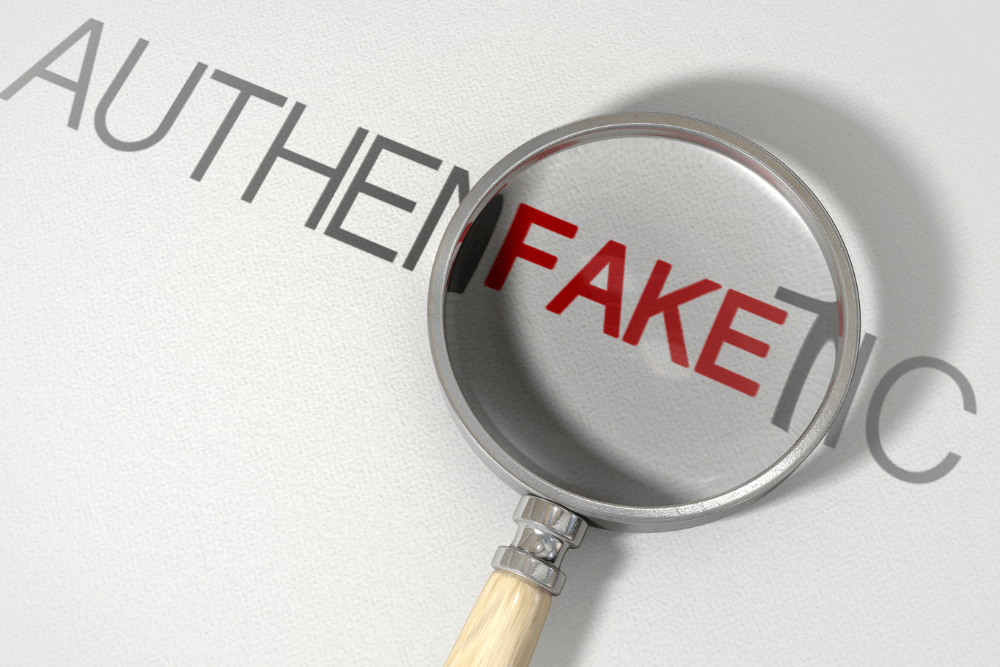
The cannabis industry has seen success and achievement in recent years. However, with this success comes a challenge: counterfeiting. Counterfeit cannabis products pose serious risks to consumers and can damage the reputation of legitimate businesses. To preserve authenticity and protect consumer safety, solid anti-counterfeiting measures can be implemented. One crucial aspect of anti-counterfeiting efforts is using packaging solutions that are both secure and reliable. Let’s take a closer look at the types of counterfeiting and the packaging options available to protect brands and consumers.
What is Counterfeiting?
There are two main types of counterfeiting that we’ll focus on:
Packaging Impersonation: Occurs when fraudsters recreate the packaging of popular and trusted brands. The aim is to deceive consumers into believing they are purchasing authentic products from a brand. Counterfeit packaging can closely mimic the design, colors, and labeling of genuine products, making it difficult for consumers to differentiate between authentic and counterfeit items. This poses a risk to a brand’s reputation if counterfeit products are being sold under their name because these fake products usually do not meet a brand’s standards for safety and quality.
Product Tampering: Product tampering involves attempts to alter, manipulate, contaminate, or compromise cannabis products. This poses significant health and safety risks to consumers, especially if harmful contaminants are introduced or if the potency of the product is affected.
Anti-Counterfeiting Options
To combat packaging impersonation, there are a myriad of solutions available. Most solutions aim at making packaging replication difficult. Using holograms on packaging is one option that will increase the difficulty fraudsters will face when trying to duplicate packaging accurately. Holograms can also incorporate additional security features like microtext and unique serial numbers. This further increases the complexity and uniqueness of the package. The complexity, specialized equipment, and materials required to create convincing holograms may deter counterfeiters from even trying to replicate that specific package, as it increases the cost.
Additionally, color changing inks, specifically tamper-indicating inks, can provide a visible indication of tampering. If someone attempts to move or reposition a label, the tamper-indicating ink is triggered and will display a different color indicating that the product may not be valid. Another type of color changing ink technology is photochromic inks. This color changing ink technology can act as an invisible layer of protection. They are only visible under specific lighting conditions and fraudsters may miss adding these to counterfeit packaging. Lastly, digital watermarking is a great option to combat packaging impersonation. These are not visible to the naked eye, but are embedded within your packaging design, for example in your logo. When these watermarks are scanned with specialized software, devices or cell phones, it can allow for verification of authenticity. Not only do digital watermarks help with authenticity, but can add customer interaction as well. When a customer scans the watermark with their smartphone, they can be taken to the brand’s website, a special landing page, and more. To take the level of protection even further, with digital printing it is possible to put a different code in each package which creates unique IDs for one product. These watermarks can even contain important information such as batch numbers, production dates, and more to enable product tracing.
To combat product tampering, a simple solution is using tamper evident bands on containers. Tamper-evident bands fit snugly around the closure of a container and are applied when the product is sealed. The only way the product can be opened is if the band is removed. Tamper evident bands provide visual evidence of tampering to the consumers and also help prevent the container from being refilled and sold. Similarly, tear notches on flexible packaging provide the same benefit that temper bands do. These are small indentations or perforated areas on flexible packaging that provide a visual indicator to consumers if a product has been opened. Both tamper bands and tear notches instill confidence in consumers by ensuring that the product meets brand’s standards for quality and safety. Lastly, using a tamper-evident seal which incorporates color-changing inks to indicate unauthorized access to a package. When the seal is intact, it will remain the original color, however if someone attempts to peel off or break the seal, the ink changes color providing evidence of potential tampering. This technology helps to safeguard products during storage, transportation, and distribution, providing assurance to consumers and protecting against counterfeit or tampered goods.
Best Practices and Conclusion
In addition to implementing the anti-counterfeiting options above, brands in the cannabis industry should consider adjusting their labels and packaging designs to increase the difficulty for replication. Furthermore, educating consumers about the key elements to observe on a brand’s package or label can enable them to detect subtle indications of tampering. By protecting both the packaging and the product, the cannabis industry can preserve its reputation and ensure the success of legitimate businesses.
Member Blog: Safeguarding Cannabis Businesses – Managing Product Liability and Ensuring Consumer Safety
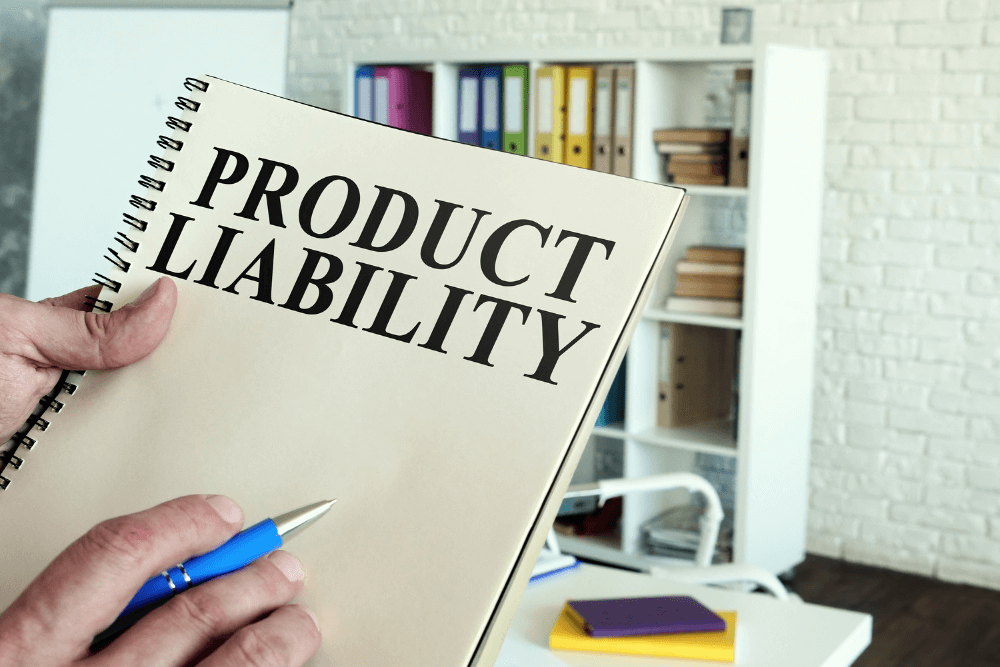
The rapidly expanding cannabis industry presents unique challenges when it comes to managing product liability. As the sector continues to grow, businesses must prioritize quality control, labeling requirements, and consumer safety to protect their reputation and financial well-being. In this article, I will explore the various risks associated with product liability in the cannabis industry and discuss risk transfer strategies to safeguard businesses from claims related to cannabis products. One of the largest misconceptions I hear is that if a client is not making the product, they do not need product liability. Unfortunately, the reality in the industry is that in a product allegation, everyone through the entire supply chain could be named in a suit.
Quality Control and Labeling Requirements:
One of the key challenges in the cannabis industry is maintaining consistent product quality and ensuring accurate labeling. Product liability claims can arise if a consumer experiences adverse effects due to contaminated or mislabeled products. To mitigate these risks, cannabis businesses must implement robust quality control measures specific to what part of the supply chain.
From cultivation to manufacturing and distribution, every stakeholder should prioritize quality assurance practices. This includes regular testing for potency, contaminants, and pesticides. By adhering to rigorous standards, businesses can minimize the chances of their products causing harm to consumers and reduce the likelihood of product liability claims.
Accurate and compliant labeling plays a critical role in managing product liability risks. It’s vital for cannabis businesses to stay informed about the specific labeling requirements in their market, as laws and regulations vary across jurisdictions. Take California, for instance, where non-manufactured products have their own set of requirements, distinct from those for manufactured products. Whether it’s raw flower or gummies, each product category has its own labeling specifications.
Sadly, there have been instances where products were packaged to attract children or imitate popular snack brands. These cases highlight the deceptive packaging that misleads consumers and targets underage individuals. By ensuring proper labeling, businesses can offer transparency to consumers, building trust in their brand. Furthermore, accurate labeling of THC content is crucial to avoid potential product liability and advertising claims. By providing clear and precise information about THC levels, businesses can protect themselves while also meeting consumer expectations.
Consumer Safety and Education:
Cannabis businesses must prioritize consumer safety by providing clear instructions for product usage and appropriate warnings, especially for edibles and other products with specific dosage instructions. Consumers should be informed about potential risks, possible side effects, and any known allergens present in the product. Accessible information to consumers can help reduce the likelihood of product misuse and associated liability claims.
Insurance Strategies for Product Liability:
Product liability insurance is a critical component of risk management for cannabis businesses. The cost of insurance premiums is typically based on gross sales, meaning that the more products a company sells, the higher the associated risk. However, it is important to note that not all insurance policies cover product liability in the cannabis industry. Therefore, businesses should work with specialized brokers who understand the unique risks and challenges in this sector.
In addition to product liability insurance, implementing further risk transfer processes can play a significant role in reducing the likelihood of being involved in a lawsuit. Businesses should establish clear contracts and agreements between cultivators, manufacturers, and distributors, outlining each party’s responsibilities and liabilities. These agreements help allocate risks appropriately and provide a legal framework for dispute resolution.
Overall, managing product liability in the cannabis industry requires a proactive and comprehensive approach. By prioritizing quality control, adhering to labeling requirements, and ensuring consumer safety, businesses can minimize the risks associated with all aspects of the supply chain when it comes to product liability. Additionally, securing appropriate insurance coverage and implementing additional risk transfer processes can provide further protection and peace of mind. As the industry evolves, staying informed and proactive in risk management will be key to long-term success and sustainability in the cannabis market.
For more information, please reach out to Valerie Taylor, Vice President, Liberty Company Insurance Brokers.
Member Blog: Stellar Customer Service, Transparency, & Education Drive Cannabis Success

by Gary Paulin, VP of Sales and Client Services at Lightning Labels
With expansive product choices, it’s no longer enough to rely solely on product quality and availability. Today’s maturing cannabis marketplace requires differentiation to resonate and succeed.
Three pillars of that differentiation are stellar customer service, total transparency, and excellent education. At the core of each, sincerity and truth must predominate. In this age of “fake news,” anything that doesn’t seem trustworthy and true likely will backfire on the company sooner or later.
It only takes one unsubstantiated quality control or product claim to hit the social media lie detector, then potentially go viral. At the very least, one consumer badmouthing your company via word-of-mouth and/or digital messaging will harm your reviews and ratings. In most cases, the damage will be undetectable until it reaches a level where revenues and reputation are noticeably impacted.
Following are four basics of stellar customer service, transparency, and education:
-
Interact authentically. Scripts and canned phrases instinctively don’t resonate with most consumers. One obvious example is the “I’m so sorry you’re having a problem” response. How likely is it that the person is really sorry and not just parroting something they’ve been told to repeat time and time again? Instead, communicate in a real way by tuning into what the existing or prospective customer is trying to address.
For example, when someone complains about lengthy waits to receive live phone support (including disconnects while waiting), it’s okay to say something like, “I get it. We’ve been having challenges. Now that we’re on the phone together, let’s address your needs right away. And, please give me your phone number, just in case this call drops. I’ll call you right back.”
-
Offer multichannel communications preferences. Some people want live phone support, not a digital option. Chat bots can be extraordinarily frustrating unless the programming and ability is advanced. Ditto for “live chat.” As much as possible, make it easy and meet everyone’s preferences. Email, live phone support, texting, website knowledge center, and digital chat should all be offered to meet the customer in a way that works best.
-
Offer total and transparent education. Knowledge centers (and associated forums) and FAQs can be excellent tools to help provide priority information, but they’re only one piece of the puzzle. Consumer questions and concerns can cover anything. There should be an easy way to find more information through the above-referenced channels as needed. Product labels can provide easy access to a variety of information, starting with label content and extending to either Augmented Reality or QR digital gateways for more in-depth education. Those digital gateways should contain valuable information, along with easily found follow-up calling, emailing, live chat, and additional educational options (including possibly Knowledge Center, FAQs, and keyword-search forums/articles, et al).
“Full disclosure” should be at the core of all things educational, both in information repositories and customer service support. For example, CBD can make some people cranky and anxious. Full disclosure must override the desire to sell. By fully informing a consumer of risks as well as rewards, the experience is much more likely to result in high marks for the company.
Conversely, incomplete or inaccurate information provided by salespeople motivated only by making sales will backfire when less than optimum outcomes occur. In contrast, a salesperson willing and able to fully educate will help build long-term customer relationships with the company.
-
Hire motivated, attentive, smart people. No matter what policies and training are in place, ultimately companies need to focus on hiring the best candidates — those dedicated to top-notch customer service, truthtelling, and education. Workforce shortages are not a valid reason to abandon these core values in the name of expedient hiring. Be committed to employee wants and needs, and be prepared to follow through. Offer generous wages, but beware of those who seem overly money motivated and demanding. They likely will be gone as soon as the next “shiny toy” opportunity comes along.
There are companies that have weathered supply chain and workforce shortage issues — and even inflationary pressures — well. One that comes to mind is Costco. Unlike many retailers during the pandemic, their quality of service has remained high. Product availability and selection have been maintained. Prices, although subject to some upward movement, don’t seem to have risen as much as most retailers.
Clearly, Costco found solutions instead of blaming challenging conditions and using those as an excuse for failure. Follow this example. Find ways to do more with less, get creative about becoming more efficient, and plan ahead so that emergent problems don’t become overly taxing.
Cannabis companies that excel in being trusted, liked, and respected will outperform their competitors willing to live with mediocrity.
 Gary Paulin is VP of Sales and Client Services at Lightning Labels, a Denver-based custom label printer that uses state-of-the-art printing technology to provide affordable, full-color custom labels and custom stickers of all shapes and sizes. Contact: sales@lightninglabels.com; 800.544.6323 or 303.481.2304.
Gary Paulin is VP of Sales and Client Services at Lightning Labels, a Denver-based custom label printer that uses state-of-the-art printing technology to provide affordable, full-color custom labels and custom stickers of all shapes and sizes. Contact: sales@lightninglabels.com; 800.544.6323 or 303.481.2304.
Committee Blog: Cannabis Lounges – Coming to a City Near You?
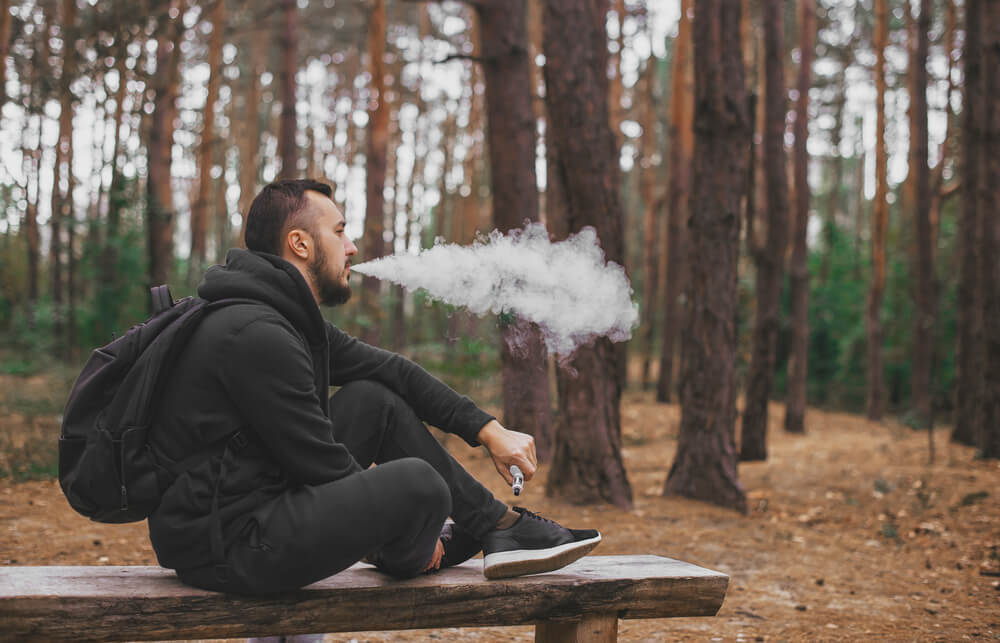
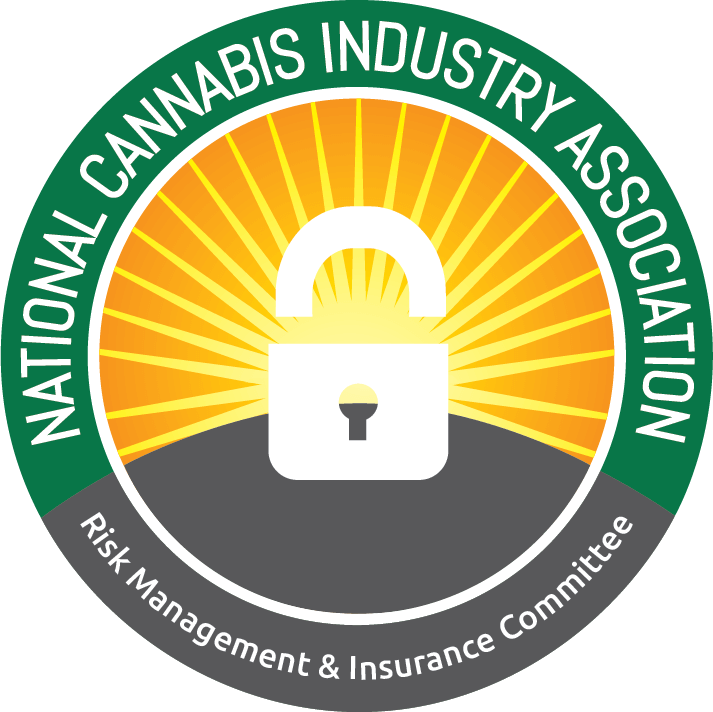 By Jodi Green, Miller Nash LLP; Shay Gilmore, The Law Office of Shay Aaron Gilmore
By Jodi Green, Miller Nash LLP; Shay Gilmore, The Law Office of Shay Aaron Gilmore
Members of NCIA’s Risk Management and Insurance Committee
Although the concept of state-legal cannabis has been around in some shape or form since 1996, cannabis remains illegal to consume in most public places. In other words, legal cannabis consumption remains relegated to back alleys, derailing efforts to “normalize” cannabis use. Tourists visiting popular cities where weed is legal are caught in the unenviable Catch-22 of being able to purchase, but not publically consume, the product. And those who attempt to use cannabis in public still face criminal penalties in some states, with minorities three times more likely to be targeted for arrest, perpetuating racial disparities at a tremendous social cost.
Enter the cannabis lounge. Cannabis lounges — also known as “consumption lounges,” cannabis cafes, or some variation on that theme — are in simplest terms the cannabis equivalent of a bar or restaurant. Depending on state and local regulations, lounges offer users the chance to congregate in a public place and smoke a joint, try out a $500 gravity bong, or sip on a cannabis drink. With any luck, consumers may enjoy their cannabis with a snack or dinner, but mixing with alcohol is typically not allowed.
As with any “new” risks, some cities, states, and insurers are… concerned. Despite some obvious tax and social benefits, detractors cite a host of reasons to prevent lounges from coming to a city near you, including at the forefront: fears of public nuisance (odors, theft, and disruption) and overconsumption — especially because most states insulate cannabis cafes from liability for harm caused by obviously intoxicated or underage users, unlike dram shop laws for alcohol.
As another NCIA member recently pointed out, even in states that do allow cannabis cafes, regulatory bodies continue to struggle with how to shape the laws and regulations governing lounges to afford adequate consumer protection while allowing businesses to thrive. Moreover, without a better understanding of the regulatory landscape, some insurers — whose business model hinges on the ability to accurately price a risk — may be unwilling to play in this new cannabis lounge market.
A Sampling of State Approaches to Cannabis Lounges
Alaska led the country in 2019 in licensing on-site consumption. A handful of states and localities have followed Alaska’s guide, and more are anticipated to join this year, including Michigan and New York. We compare a few regulatory schemes below and also consider the impact of dram shop legislation on risks faced by the industry.
California
California, governed on the state level by the Medicinal and Adult Use Cannabis Regulation and Safety Act, delegates to localities the right to open consumption lounges. Put simply, cities have to affirmatively “opt in” to allow lounges. With a few contingencies — including that patrons must be 21 or older and no alcohol or tobacco can be sold on premises — “a local jurisdiction may allow for the smoking, vaporizing, and ingesting of cannabis or cannabis products on the premises of a” licensed retailer. See BPC § 26200(g).
To date, only a few localities have opted in to allow cannabis lounges, including San Francisco, Oakland, and Palm Springs. West Hollywood, in efforts to create an epicenter for canna-tourism, plans to allow up to 16 lounges within its jurisdiction. Because state law provides little regulatory guidance for lounges, localities generally provide more specific guidance. As an example, West Hollywood’s local municipal code requires security guards on site, as well as within a two-block radius surrounding the business during operation, and allows the sale of cannabis to an individual “in an amount reasonable for onsite consumption.” West Hollywood Municipal Code §5.70.041. Only one lounge is currently open in West Hollywood, the Artist Tree’s Studio Cannabis Lounge, which offers not only lounge access but cannabis yoga, live music, and comedy shows, along with a revolving selection of local art. The Woods, another West Hollywood dispensary with a soon-to-open courtyard lounge space, is also slated to open in 2022.
Although California law significantly limits third-party liability for alcohol-related accidents, it does not afford cannabis owners the same protection. For example, California Civil Code §1714 explicitly states that furnishing alcohol “is not the proximate cause of injuries resulting from intoxication,” which has essentially absolved bars, restaurants, party hosts, and most others of potential liability for selling or furnishing alcohol to customers and guests with an exception for liability arising from the furnishing of alcohol to an “obviously intoxicated minor.” See California Business & Professions Code § 25602.1. Without similar protections for cannabis lounges, injured parties could attempt to sue under a negligence theory if a business or employee serves an intoxicated patron who causes harm.
Colorado
As of January 1, 2020, local jurisdictions in Colorado can opt-in to the state’s cannabis hospitality business license regime (Colo. Rev. Stat. § 44-10-609), and as of March of 2022, the City of Denver has approved cannabis hospitality businesses for operation. Denver operators include the first social equity applicant in Denver approved for a hospitality license, the Tetra Lounge, although from its website Tetra Lounge’s website describes itself as “a private lounge,” requiring a monthly or annual membership fee and a liability waiver to gain access.
As to dram shop liability, although Colorado law authorizes damages against a licensee for willfully and knowingly selling or serving alcoholic beverages to a visibly intoxicated person, the Colorado Legislature caps liability at $150,000 (Colo. Rev. Stat. § 12-47-801 (3)(II)(c)). This damages cap improves (i.e., reduces) the ISO hazard grade, resulting in the improvement of insurance options available for liquor liability. The legislature has not adopted the same or a similar damages cap on liability for cannabis consumption establishments.
Nevada
In June 2021, Nevada’s Governor signed Assembly Bill 341 into law, authorizing the Nevada Cannabis Compliance Board (“CCB”) to license and regulate consumption lounges across the state, subject always to local approval. The State plans to issue up to 65 lounge licenses (40-45 for lounges attached to existing dispensaries, 20 for independent lounges) with 10 reserved for social equity applicants.
Most recently, on June 28, 2022, the CCB voted to unanimously approve a host of regulations for cannabis consumption lounges. Nevada’s extremely detailed state regulations prohibit the sale of “single use cannabis products” with more than 3.5 grams of “usable cannabis” and 10 mg of THC for edibles; prohibit the removal of any cannabis products from a lounge; require a mitigation plan for impaired driving and detailed employee training for overconsumption; and require consumer education and warnings to customers, among other things. As with other states, Nevada allows local jurisdictions to prohibit consumption lounges and to implement more stringent regulations than state law.
Unlike other states, however, Nevada law carves out protections for cannabis lounge operators just as it does for alcohol. Nevada law already protects businesses that serve or sell alcoholic beverages from injuries inflicted by an intoxicated person. And while any person who knowingly furnishes an alcoholic beverage to any person under 21 years of age is guilty of a misdemeanor, the law provides only for criminal penalties, not civil liability. The Nevada Supreme Court has repeatedly refused to impose responsibility on vendors selling alcohol absent a legislative provision. See Snyder v. Viani, 885 P.2d 610 (Nev. 1994) (holding consumption is the proximate cause of alcohol-related injuries and dismissing the negligence claim against a tavern owner for alcohol service). The same rules will apply to cannabis operators.
Illinois
Over two years after full legalization of adult-use commercial cannabis in Illinois, cannabis lounges in Illinois are still relatively rare, with the first Chicago-area marijuana consumption lounge opening on April 20, 2022. Like other states, the State of Illinois does not directly license lounges, but it allows local governments to opt in.
Illinois creates a cause of action against sellers for injury by an intoxicated person. § 235 Ill. Comp. Stat. 5/6-21. The standards for liability under the Illinois dram shop law include: (1) sale of alcohol to any person who, while intoxicated, causes injury, and (2) any person owning, renting, leasing, or permitting the occupation of any building or premises with knowledge that alcoholic liquors are to be sold therein, severally or jointly, along with the person selling or giving liquor. In Illinois, the Dram Shop Statute provides the exclusive remedy for alcohol related injuries. See Charles v. Seigfreid, 65 NE.2d. 154 (Ill. 1995). The Statute also provides stringent limitations on recovery of damages. There is no equivalent in Illinois for cannabis entities.
The Takeaway for Business Entities and Insurance Providers
As with cannabis law generally, lounge operators face a patchwork of state and local regulations that vary tremendously by jurisdiction. In most places, cannabis lounge owners are not protected by dram shop/gram shop laws that otherwise insulate bars and restaurants from liability for overconsumption. This means that companies must be vigilant in protecting themselves from liability by instituting compliance and risk-management procedures.
In some instances, such as California’s West Hollywood, which has far fewer safeguards and guidelines than Nevada, operators are largely left to their own devices in implementing adequate risk transfer and risk management, compliance, employee training, and consumer education to limit risk of liability. While the West Hollywood municipal code requires lounges to limit cannabis sales of cannabis “in an amount reasonable for onsite consumption,” the “reasonableness” standard is rife with ambiguity and could lead to disputes regarding liability and assumption of risk if a patron overconsumes.
Evaluating and preventing overconsumption and intoxication will be particularly difficult for cannabis when: patrons have varying experience levels with cannabis; products can be sold in more than a single serving, and no specific consumer education is required. Thus, even in locations that have more stringent regulatory oversight, companies would be wise to consult with experienced counsel and consultants to avoid or limit potential risks associated with regulatory uncertainty, civil liability, and government penalties for non-compliance.
This brings us full circle to the question of insurance. Even in the states that allow consumption lounges, very few insurance companies provide coverage for on-site consumption (although some do). If an exclusion prohibits coverage, the company may not have coverage for important and sometimes catastrophic events, such as property damage by fire, theft/robbery, cyber events, sexual harassment or discrimination claims by employees or others, and bodily injuries to, or caused by, patrons (on and off premises).
Most existing property, general liability, products liability, and other insurance policies — including those written for the cannabis industry — expressly exclude coverage for on-site consumption or bodily injury caused by intoxication. In fact, some existing cannabis insurance companies include a “health hazard” exclusion in their policies, which exclude coverage for any bodily injury arising in any way from the use of cannabis, including any health injury. Cannabis insurance policies may also exclude coverage for intentional or illegal acts, which some insurers may try to apply to any claim involving cannabis on the basis that the sale of cannabis violates federal law (the Controlled Substances Act), even if it is state legal.
For current licensees that are planning to open an attached or adjacent consumption space, current insurance policies may not cover injuries arising in the lounge space. Further, any failure to identify a change in business type could prompt an insurance carrier to deny coverage for subsequent claims based on a theory of misrepresentation.
In closing, cannabis owners should attempt to negotiate separate and/or broader coverage that carves out coverage for their cannabis-related activities, including on premise consumption, with their current insurer or seek to obtain coverage from a different carrier. Experienced insurance coverage counsel can assist with identifying reputable insurance brokers and negotiating policies that provide such coverage. Because of the limited options, companies would be wise to begin the process of identifying experienced insurance coverage advisors at the beginning of their licensing journey.
How Sweet It Is… Contemplating Cannabis Confections
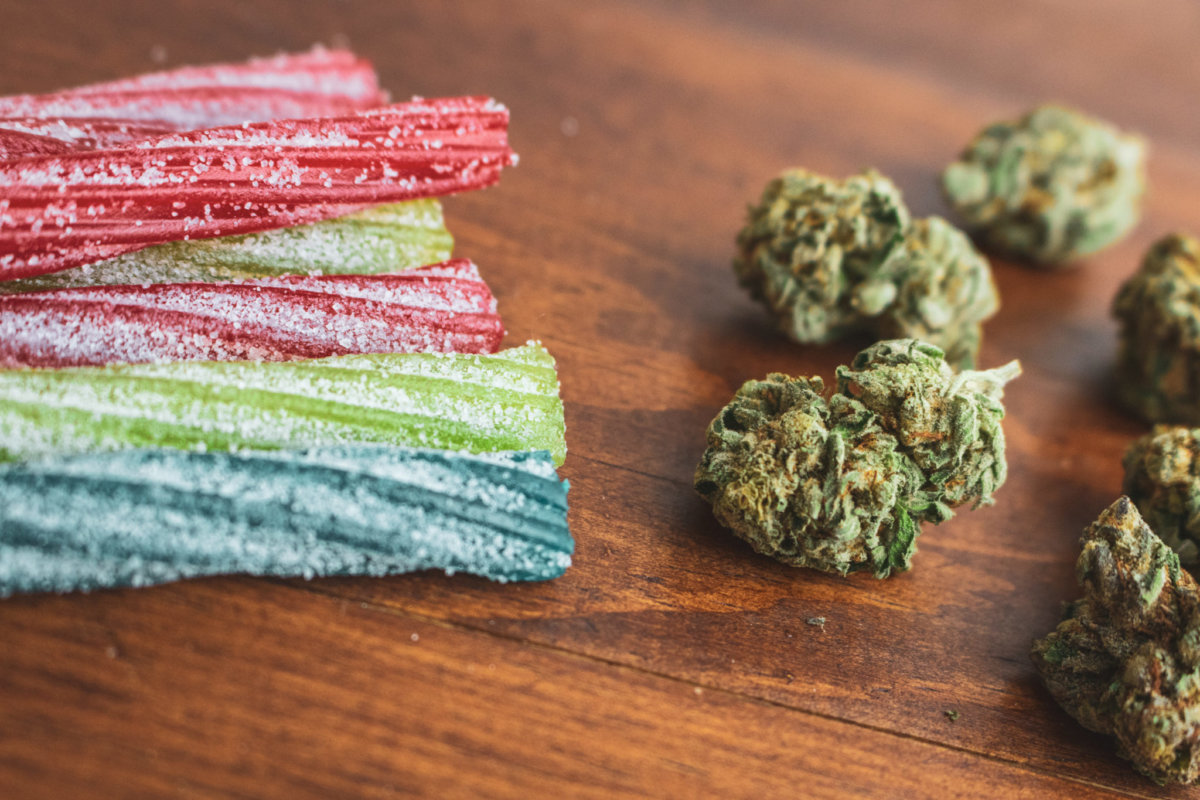
 by Rachel Kurtz-McAlaine, NCIA’s Deputy Director of Public Policy
by Rachel Kurtz-McAlaine, NCIA’s Deputy Director of Public Policy
Have you ever had a bad experience eating edibles? Someone gave you a homemade brownie, you ate it, and they were like, “You weren’t supposed to eat the whole thing!” There are many people who won’t eat edibles at all because of past negative experiences. Maureen Dowd’s now infamous column about her harrowing experience eating too much of an edible was from an infused chocolate bar she bought from a licensed retail facility in Colorado. That didn’t do much to help the scary reputation of edibles.
Dowd’s article quoted Andrew Freeman, Colorado’s Director of Marijuana Coordination at the time: “There are way too many stories of people not understanding how much they’re eating. With liquor, people understand what they’re getting themselves into. But that doesn’t exist right now for edibles for new users in the market.” To imply that liquor is somehow safer was disingenuous and dangerous. In the seven years since this article was written, it’s clear that the alarmist predictions about cannabis edibles aren’t coming true, but I just read an article about another fraternity pledge that died recently from alcohol poisoning.
However, Dowd and Freeman were both correct that as the responsible cannabis industry that we are, we should be educating our consumers on the potential harm from overconsumption (e.g. extreme discomfort) and how to properly titrate. While we know it’s not as dangerous as it’s made out to be, happy customers make for repeat customers. We have gotten more sophisticated as an industry in the last seven years with things like labeling, dosage, and consistency, but there is so much potential for more innovation and refinement.
I consider edibles to be one of the best things to come out of the legal, regulated cannabis marketplace, and they’re gaining in popularity. According to BDSA, the edibles market grew 39% over the past year, and with good reason: people prefer the healthier aspect of eating to smoking, it’s more discreet, and it’s consistent. For some people it’s like eating a gummy vitamin or dietary supplement. There is also a trend toward micro-dosing, especially if the edible is so tasty it should be enjoyed in larger quantities, and playing with ratios between THC, CBD, and other cannabinoids. People can pay attention to their bodies and discover what amount works best for what they’re trying to achieve.
I was honored to speak recently at the American Association of Candy Technologists’ 2021 Technical Seminar. They were incredibly friendly people, and I’m not just saying that because they gave me enough candy it reminded me of trick or treating in that good neighborhood where there are a ton of kids and all the houses are decked out and you come home with a huge bag full of candy. They were genuinely nice! We played trivia and roasted s’mores in the evening. It felt like the summer camp every kid dreamed of going to.
They were also extremely interested in learning more about the cannabis industry. NCIA was invited to speak through one of our common members, Clara Food Technology, who provides expertise in making better cannabis edibles through science. In fact, most of the people I met who were interested in the industry weren’t planning on starting their own edible company, but providing the industry with some pretty incredible food science expertise that can only make the industry better as a whole. Cool things like making sure candy doesn’t get too hard or stick together, the ingredients are properly mixed so they’re consistent throughout, ramping up production with new systems and machines, and staying shelf-stable.
People who are entering the edibles market should absolutely find one of these food science consulting companies from the start to help avoid costly errors. Edible companies should have a food science consultant on hand, or even on staff, to elevate the quality and consistency of the products, and bring fresh ideas.
If you’ve been hesitant, take another look at edibles and the value they bring to the cannabis industry. We’ve come so far since the Dowd article, but the potential is limitless.
Driving High? Information From The CO Department of Transportation

Since Colorado became the first state to legalize recreational marijuana in 2014, the Colorado Department of Transportation (CDOT) has used its unique position to remain on the forefront of traffic safety campaigns for marijuana-impaired driving. CDOT recently launched its new Drugged Driving Colorado website, DriveHighDUI.com, which features telling insights, current data, and a lengthy list of resources to help inform not only Coloradans but marijuana consumers and industry professionals nationwide. As communication shifts to a heavy online focus amid COVID-19, providing accurate and detailed information from a distance is more necessary than ever.
Consumer Education
Consumer health and safety are important to all cannabis businesses, yet information on driving impaired can be hard to come by. CDOT’s website has educational resources that answer commonly asked questions and provide data and downloadable social media graphics, videos, and more. CDOT encourages the free use of its resources and information for in-store screens, website education pages, email blasts, blog/newsletter posts, or at conferences and trade shows.
Frontline Employee Knowledge
Budtenders, manufacturing representatives, and trade publications are the voices most trusted by cannabis consumers. Educating all staff can help dispel false perceptions of cannabis-impaired driving and help change behaviors around driving high. Learn the basics and keep up with the latest news on the Featured News section of DriveHighDUI.com. If you have industry news or an article idea, please reach out to CDOT Traffic Safety Manager Sam Cole at sam.cole@state.co.us.
Community Relations — Be A Valued Resource
Building relationships with the communities in which they operate is crucial to the health and wellbeing of the cannabis industry. CDOT has partnered with health care organizations, nonprofits, universities, and neighborhood groups to communicate the dangers of driving high. Affecting change takes cooperation — and cannabis companies can use these resources to open a dialogue with local, state, or national organizations to help spread the word.
Impaired driving from alcohol and/or other drugs is one of the leading causes of traffic deaths on Colorado’s roads, accounting for approximately one-quarter of all fatalities. This is an issue that affects all of us. CDOT hopes its ongoing efforts to educate cannabis consumers extend beyond Colorado’s borders and we encourage NCIA members and industry organizations across the nation to take advantage of the available resources so we can lead by example and keep our communities safe.

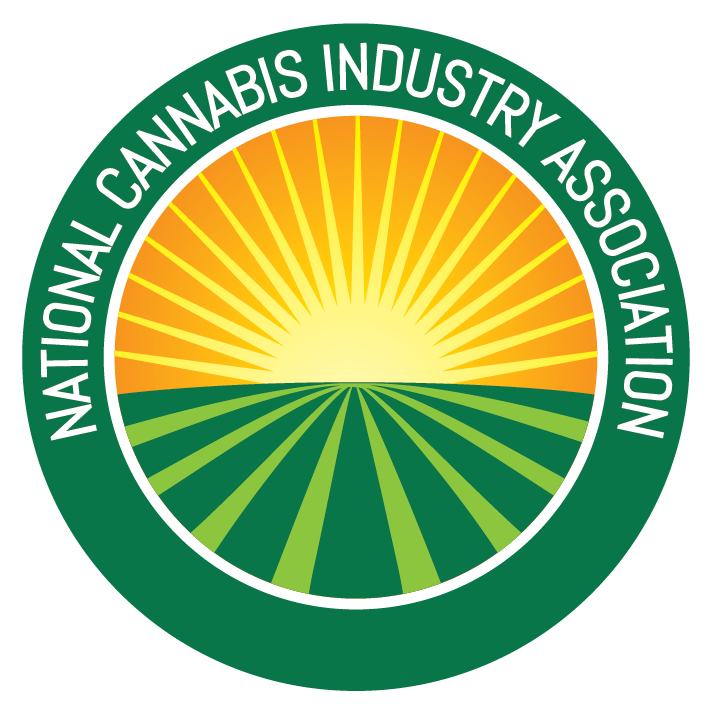


 Gary Paulin is VP of Sales and Client Services at
Gary Paulin is VP of Sales and Client Services at 
 By Jodi Green, Miller Nash LLP; Shay Gilmore, The Law Office of Shay Aaron Gilmore
By Jodi Green, Miller Nash LLP; Shay Gilmore, The Law Office of Shay Aaron Gilmore
 by Rachel Kurtz-McAlaine, NCIA’s Deputy Director of Public Policy
by Rachel Kurtz-McAlaine, NCIA’s Deputy Director of Public Policy
Follow NCIA
Newsletter
Facebook
Twitter
LinkedIn
Instagram
News & Resource Topics
–
This Just In
Member Blog: Navigating Chemical Safety in Cannabis Extraction
Innovation in CBD Gummies: Vegan, Custom-Dose, Functional Blends